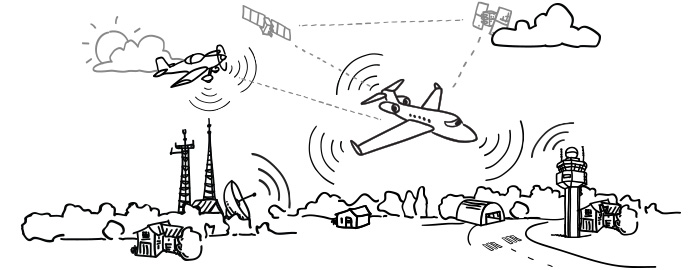The new M700 FURY has received Federal Aviation Administration (FAA) approval for unpaved field operations!
ADS-B: Is your aircraft ready for 2020?
We take look at what is required of your aircraft, in order to meet the 2020 requirements and what your options are if your aircraft does not.
Who does it apply to?
The Requirements for ADS‑B capability, including effective date and affected operation type, vary around the world, you can see them all here.
In the US the date is, December 31, 2019. All aircraft Operating in Class A, B, C airspace, Class E above 10,000 feet MSL and airspace identified in Part 91 Appendix D require ADS‑B “Out.” (Aircraft certified without an electrical system are exempt.)
And in Europe, all aircraft operating IFR/GAT with a maximum certified take-off mass exceeding 5 700 kg or having a maximum cruising true airspeed capability greater than 250 knots are required to carry and operate Mode S Level 2s transponder(s) with Mode S Elementary Surveillance (ELS), Enhanced Surveillance (EHS) (for fixed wing aircraft) and ADS-B 1090MHZ Extended Squitter (ES) capabilities. The applicability dates for this requirement is: June 7th 2020 for aircraft with an individual certificate of airworthiness first issued before 8 June 2016.
What is ADS-B?
ADS-B, or Automatic Dependent Surveillance-Broadcast, is a new technology that allows air traffic controllers to see traffic with more precision than ever before. Instead of relying on decades-old radar technology, ADS-B uses highly accurate GPS signals. As a result, ADS-B works where radar often doesn’t — even in remote areas or mountainous terrain. And because it can function at low altitudes and on the ground, it can also be used to monitor traffic on airport taxiways and runways.

Becoming compliant
This may not be such an expensive and complex matter as you think. There are already many providers of ADS-B solutions for most aircraft, and some of the already installed Mode S transponders can be upgraded at a modest cost. Contact your Avionics expert for advice.
We have recently sold a Piper Arrow IV from 1980, which has thereafter been upgraded to comply with both 8,33 KHz demands of 2017, and ready for ADS-B compliance in 2020, read about it here.



